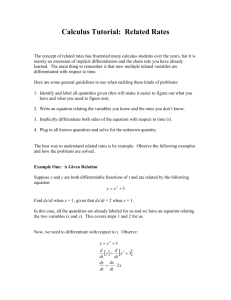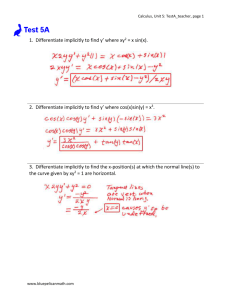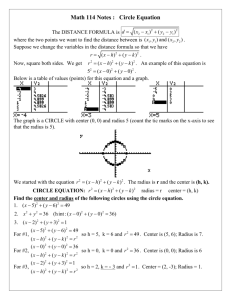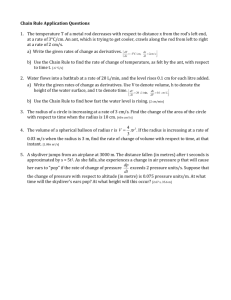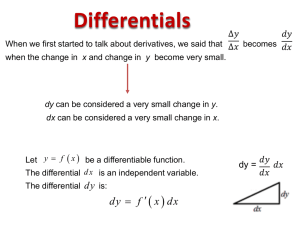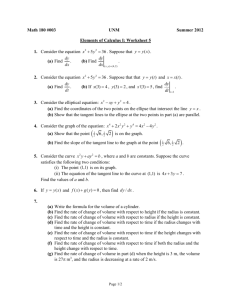Calc 2.6 Guided Notes
advertisement
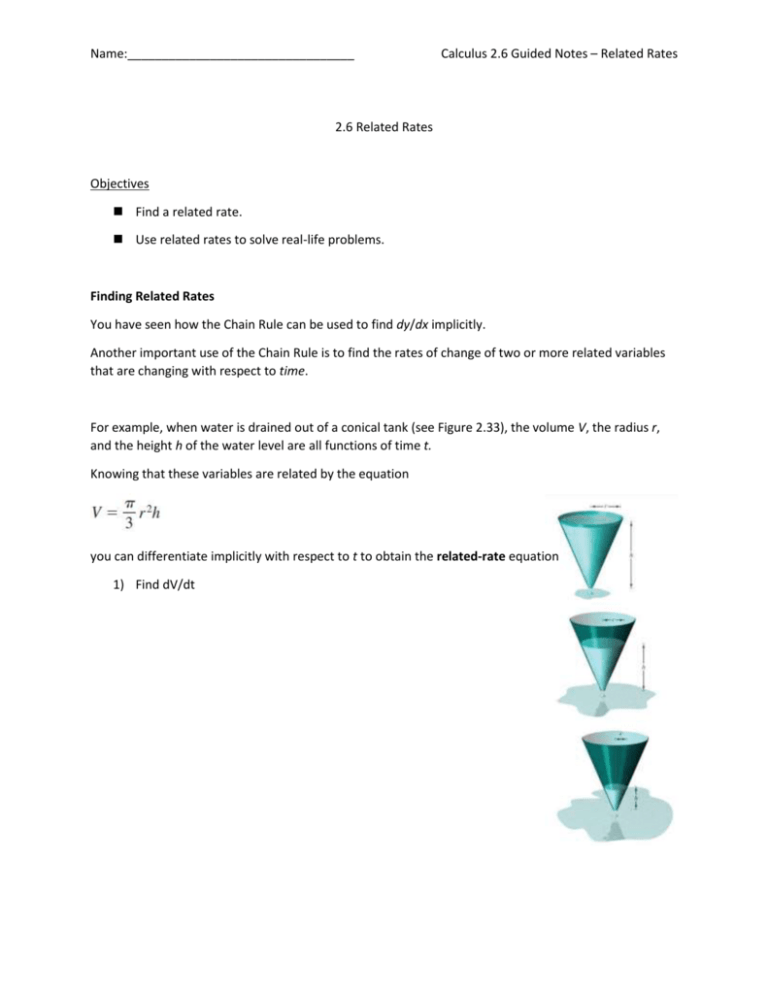
Name:_________________________________ Calculus 2.6 Guided Notes – Related Rates 2.6 Related Rates Objectives Find a related rate. Use related rates to solve real-life problems. Finding Related Rates You have seen how the Chain Rule can be used to find dy/dx implicitly. Another important use of the Chain Rule is to find the rates of change of two or more related variables that are changing with respect to time. For example, when water is drained out of a conical tank (see Figure 2.33), the volume V, the radius r, and the height h of the water level are all functions of time t. Knowing that these variables are related by the equation you can differentiate implicitly with respect to t to obtain the related-rate equation 1) Find dV/dt Name:_________________________________ Calculus 2.6 Guided Notes – Related Rates EXAMPLE PROBLEM Suppose x and y are both differentiable functions of t and are related by the equation y = x2 + 3. Find dy/dt when x = 1, given that dx/dt = 2 when x = 1. Problem Solving with Related Rates A pebble is dropped in a calm pond, causing ripples in the from of concentric circles. The radius r of the outer ripple is increasing at a rate of 1 foot per second. When the radius is 4 feet, at what rate is the total area A of the disturbed water changing? Name:_________________________________ Calculus 2.6 Guided Notes – Related Rates The table below lists examples of mathematical models involving rates of change. Practice Problems Oil spilling from a ruptured tanker spreads in a circle on the surface of the ocean. The area of the spill increases at a rate of 9π m²/min. How fast is the radius of the spill increasing when the radius is 10 m? A spherical balloon is inflated so that its radius (r) increases at a rate of 2r cm/sec. How fast is the volume of the balloon increasing when the radius is 4 cm? Name:_________________________________ Calculus 2.6 Guided Notes – Related Rates A 6 ft tall person is walking away from a 20 ft tall lamppost at a rate of 5 ft/sec. Assume the scenario can be modeled with right triangles. At what rate is the length of the person's shadow changing when the person is 16 ft from the lamppost? 1. Suppose the radius of a spherical balloon is shrinking at ½ in/min. How fast is the volume decreasing when the radius is 4 inches? 2. A person is pushing a box up a ramp at 3 ft/sec. If the ramp is 20 ft. long and 5 ft. high, how fast is the box rising up the ramp? 3. Car A is traveling west at 50 mi/hr. and car B is traveling north at 60 mi/hr. Both are headed for the intersection of the two roads. At what rate are the cars approaching each other when car A is 0.3 mi. and car B is 0.4 mi. from the intersection? Name:_________________________________ Calculus 2.6 Guided Notes – Related Rates Name:_________________________________ Calculus 2.6 Guided Notes – Related Rates

